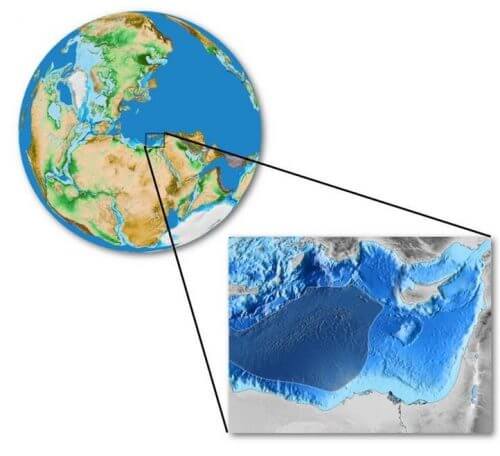Most of the oceanic crust is constantly being recycled and therefore is at most 200 million years old, and the area in question is over 300 million years old

New geophysical data show that the eastern Mediterranean, west of Cyprus and east of Crete (the shaded area on the map attached here), preserves remnants of an ancient ocean. This is according to a new study published this week in the journal Nature Geoscience, conducted by Dr. Roi Granot from the Department of Geological and Environmental Sciences at Ben-Gurion University in the Negev. The research was funded with the support of the Ministry of Science.
The Eastern Mediterranean Sea contains the oldest oceanic crust in the world, which is still in place on the ocean floor. This is what the researcher reports in his article. Due to the high density of the oceanic crust, in the subduction zones it is recycled relatively quickly back into the Earth's mantle. This means that most of the oceanic crust is less than 200 million years old. Although an older remnant of crust may have been preserved in the Herodotus Basin of the eastern Mediterranean, this area is covered by thick sediments, so it is unclear what the exact age of the crust is, or if it is oceanic at all.
Dr. Roi Granot uses magnetic data to analyze the structure of the crust in the Herodotus basin, and discovered that the rocks are characterized by magnetic stripes - the hallmark of oceanic crust formed in the central-oceanic ridge. As the magma at the mid-ocean ridge cools, magnetic minerals in the newly formed rocks align with the direction of the Earth's magnetic field. Changes that apply over time in the direction of the magnetic field are recorded on the ocean floor, creating a unique "barcode" that provides a time stamp for the formation of the crust. Using this principle and the detection of deviations in magnetic stripe patterns, the author shows that the oceanic crust in the Herodotus Basin may actually be 340 million years old.
The researcher suggested that the crust may be a remnant of the ancient Tethys Sea, which existed long before the Atlantic Ocean and the Indian Ocean. If the explanation is correct, it implies that the ocean was formed much earlier than previously thought.
Link to the article in Nature Geoscience:

One response
The Mesnian event (the blocking of the Gilbert Strait and the drying up of the Mediterranean Sea). Does not rule out this assumption? In the Messinian era, the area was reduced to a few very salty seas - when in deep areas (huge cliffs - created due to rowing), the temperatures reached 80 degrees! There are expeditions to the period and the ice age and its end.